Albino Ball Python For Sale
$349.99
WE HAVE ALBINO BALL PYTHON FOR SALE. HERE ARE SOME HIGHLIGHTS:
- Python regius
- Captive Bred
- Male and Female
- Approximately 53 Inches In Length
- Roughly 2209 Grams And Growing
- Feeding On Live Adult Mice Weekly
FUN FACTS!
- Ball Pythons Are Native To Central And Western Africa And Thrive In These Warm, Tropical Areas
- Great For A First Time Keeper As Well As An Experienced Breeder
- When Hatching Out Of The Egg They Can Be As Small As 10 Inches And Grow To Be 5 Feet
- With Proper Care And Setup These Snakes Can Live 20 – 25 Years In Captivity
Albino Ball Pythons
Albino ball pythons, scientifically known as Python regius, are an extraordinary and visually captivating morph of the ball python species. Originating from the savannas and grasslands of West and Central Africa, these snakes have become highly sought after in the pet trade due to their striking appearance and manageable size. The defining characteristic of albino ball pythons is their lack of melanin, which gives them their distinctive white and yellow coloration, along with pink or red eyes.
Unlike their wild-type counterparts, which exhibit a more subdued pattern of browns and blacks, albino ball pythons stand out with their vibrant and unique hues. This genetic mutation not only sets them apart visually but also makes them one of the most popular morphs among snake enthusiasts and breeders. Their docile nature and relatively small size, typically reaching 3 to 5 feet in length, further contribute to their appeal as pets.
The popularity of albino ball pythons in the pet trade can be attributed to several factors. Firstly, their stunning appearance makes them a desirable addition to any reptile collection. Secondly, they are known for their calm temperament, which makes them suitable for both novice and experienced snake keepers. Additionally, with the advent of selective breeding, albino ball pythons have become more accessible, allowing enthusiasts to explore various albino combinations and patterns.
Overall, the albino ball python is not just a beautiful snake but also a testament to the diversity and adaptability of the ball python species. Their unique coloration and gentle disposition have earned them a special place in the hearts of reptile lovers worldwide, making them a fascinating subject of study and a cherished pet.
Genetics Behind Albino Ball Pythons
The captivating coloration of albino ball pythons is a direct result of specific genetic factors. Albinism in ball pythons is caused by a recessive genetic mutation that inhibits the production of melanin, the pigment responsible for brown and black hues in the skin. This absence of melanin results in the striking yellow and white color patterns that albino ball pythons are known for.
To understand how this genetic trait is inherited, it’s necessary to grasp the basics of recessive mutations. Each ball python inherits two copies of each gene, one from each parent. For a ball python to exhibit albinism, it must inherit two copies of the albino gene, one from each parent. This genetic combination is denoted as “aa,” where “a” represents the albino gene. In contrast, a ball python with one normal gene and one albino gene (denoted as “Aa”) will not display albinism but will be a carrier of the trait, capable of passing it to its offspring.
When it comes to breeding, the pairing of ball pythons with different genetic combinations can yield varying results. For instance, if two carriers (Aa) are bred together, there is a 25% chance their offspring will be albino (aa), a 50% chance the offspring will be carriers (Aa), and a 25% chance the offspring will not carry the albino gene at all (AA). However, when one parent is albino (aa) and the other is a carrier (Aa), the probability increases, giving a 50% chance for albino offspring and a 50% chance for carriers.
The precise understanding of these genetic mechanics not only elucidates the fascinating appearance of albino ball pythons but also guides breeders in achieving desired outcomes. This genetic predictability allows for the preservation and proliferation of such unique traits within ball python populations.
Physical Characteristics and Identification
Albino ball pythons are a captivating morph, distinguished by their unique physical traits that set them apart from other ball python varieties. One of the most striking features of albino ball pythons is their vivid coloration. Unlike the typical dark and earthy hues seen in many ball pythons, albino ball pythons exhibit a stunning palette of bright yellow and stark white. These colors interlace to form distinctive patterns along their bodies, making them easily recognizable.
The absence of melanin in albino ball pythons is the underlying reason for their unique appearance. This genetic anomaly results in the production of yellow pigments while completely lacking black or brown pigments, giving rise to their characteristic color scheme. The patterns on an albino ball python can vary widely, from bold, high-contrast bands to more subtle, intricate designs, but the yellow and white coloration remains a constant and defining feature.
Another remarkable attribute of albino ball pythons is their eye color. Typically, these snakes have vibrant red or pink eyes, a direct consequence of their albinism. The lack of dark pigmentation allows the blood vessels behind the eyes to be more visible, contributing to their unique eye color. This serves as an additional identification marker when distinguishing albino ball pythons from other morphs.
When identifying an albino ball python, it is essential to consider these key physical characteristics: the unmistakable yellow and white coloration, the distinctive patterns, and the red or pink eyes. By focusing on these traits, enthusiasts and breeders can accurately identify albino ball pythons and appreciate the beauty and rarity of this morph.
Understanding these physical characteristics not only aids in identification but also enhances the appreciation of the albino ball python’s unique place within the diverse world of ball python morphs. Their striking appearance and genetic uniqueness make them a fascinating subject for both herpetology enthusiasts and reptile hobbyists alike.
Habitat and Natural Behavior
Ball pythons, including the captivating albino variations, are native to the grasslands, savannas, and sparsely wooded areas of West and Central Africa. These regions provide the warm and humid climate conditions that are essential for their survival. Albino ball pythons, like their wild-type counterparts, thrive in temperatures ranging from 75-85°F (24-29°C) with humidity levels between 50-60%. These conditions replicate their natural environment, enabling them to maintain optimal health and exhibit normal behaviors.
One of the key aspects of ball python behavior is their tendency to hide. In the wild, these snakes are known to seek refuge in burrows, termite mounds, and beneath debris to avoid predators and conserve moisture. This nocturnal species is most active during the night, using their keen sense of smell and heat-sensing pits to hunt for small mammals and birds. Their constricting method of hunting allows them to subdue prey effectively, ensuring a steady food supply in their native habitat.
Understanding the natural behaviors of albino ball pythons is crucial for providing appropriate care in captivity. In a captive environment, it is essential to replicate their natural habitat as closely as possible. This includes providing a temperature gradient within the enclosure, with a warm basking area and a cooler side to allow for thermoregulation. Additionally, maintaining proper humidity levels is vital to prevent dehydration and aid in shedding. Providing multiple hiding spots, such as caves or artificial burrows, will help reduce stress and mimic the security they find in the wild.
By catering to the natural habitat and behaviors of albino ball pythons, handlers can ensure these fascinating reptiles thrive in captivity. Observing and understanding their needs not only enhances their well-being but also allows enthusiasts to appreciate the unique characteristics and beauty of these remarkable creatures.
Caring for Albino Ball Pythons
When it comes to caring for albino ball pythons, providing a suitable environment and understanding their specific needs is crucial. The enclosure setup is the first critical aspect; a secure, well-ventilated terrarium with ample space for movement is essential. A 20-gallon tank is generally sufficient for a juvenile, but adult albino ball pythons may require a 40-gallon enclosure. The use of a secure lid is necessary to prevent escapes.
Temperature and humidity are vital to the health of albino ball pythons. Maintaining a gradient temperature within the enclosure is recommended, with a basking spot at 88-92°F and a cooler area around 78-80°F. A reliable thermostat and heat source, such as an under-tank heater or heat lamp, should be used to regulate these temperatures. Humidity levels should be kept between 50-60%, which can be achieved by misting the enclosure regularly and providing a water dish big enough for the python to soak in.
Feeding habits of albino ball pythons are relatively straightforward. They are carnivores and primarily consume rodents. Juveniles should be fed once a week, while adults can be fed every 10-14 days. Prey should be appropriately sized, roughly equivalent to the girth of the python. Overfeeding can lead to obesity, a common health issue in captive snakes, so monitoring their weight and adjusting feeding frequency as needed is important.
Handling practices play a significant role in the wellbeing of albino ball pythons. Regular, gentle handling helps to acclimate them to human interaction, reducing stress. However, handling should be avoided during the first few days after feeding to prevent regurgitation, and during shedding periods when the python may be more irritable.
Common health issues for albino ball pythons include respiratory infections, mites, and scale rot. Preventing these issues involves maintaining proper enclosure conditions and performing regular health checks. If any signs of illness are observed, such as wheezing, lethargy, or unusual spots on the skin, seeking veterinary care promptly is essential.
Breeding Albino Ball Pythons
Breeding albino ball pythons is a specialized endeavor that can yield both significant rewards and challenges. The initial step in the breeding process is selecting compatible pairs. Albino ball pythons typically require a pairing of two heterozygous (het) albino individuals or one het albino and one visual albino to produce albino offspring. It is crucial to ensure the health and genetic compatibility of the breeding pair to avoid potential complications.
Once a suitable pair is identified, the breeding process can begin. This usually involves a controlled environment where temperature and humidity are carefully regulated. The pythons will engage in courtship behavior, which can last several weeks. Successful mating is followed by the female’s ovulation and subsequent egg-laying. The eggs must be promptly transferred to an incubator, where they are kept at a consistent temperature, typically around 88 to 90 degrees Fahrenheit, and high humidity levels.
Incubation is a critical period that generally lasts about 55 to 60 days. During this time, the eggs need constant monitoring to ensure optimal conditions are maintained. Any fluctuations in temperature or humidity can adversely affect the developing embryos. Upon nearing the end of the incubation period, the eggs will begin to “pip,” signaling the imminent hatching of the baby pythons.
The rewards of breeding albino ball pythons include the satisfaction of successfully hatching healthy offspring and the potential financial gains from selling these sought-after reptiles. However, it is essential to be aware of the ethical considerations and responsibilities involved. Breeders must ensure that they are not contributing to overpopulation or compromising the welfare of the animals. Proper documentation and adherence to breeding guidelines are imperative to maintain genetic diversity and overall health within the breeding population.
In conclusion, while breeding albino ball pythons requires meticulous care and attention, the experience can be profoundly fulfilling for those committed to maintaining ethical standards and contributing positively to the reptile community.
Common Myths and Misconceptions
When it comes to albino ball pythons, numerous myths and misconceptions circulate, often leading to unnecessary apprehensions and misinformed decisions. One prevalent myth is that albino ball pythons are inherently more aggressive or temperamental compared to their non-albino counterparts. This is unfounded, as their behavior is not influenced by their coloration. Like all ball pythons, albino variants are generally docile and make excellent pets when properly handled and cared for.
Another widespread misconception is that albino ball pythons require special or significantly different care compared to regular ball pythons. In reality, their care requirements are virtually identical. They need a warm, humid environment, a clean enclosure, and a diet of appropriately sized prey. It’s crucial to maintain the right habitat conditions to prevent health issues, but these guidelines apply to all ball pythons, irrespective of their coloration.
Health concerns are also a topic of misinformation. Some believe that albino ball pythons are more prone to health problems due to their genetic traits. While it’s true that all reptiles, including albino ball pythons, can have genetic issues, albinos are not inherently less healthy. Responsible breeding practices have significantly reduced the prevalence of genetic disorders. As with any pet, regular veterinary check-ups and attentive care are key to ensuring their well-being.
Lastly, there’s a myth that albino ball pythons have poor eyesight and are more sensitive to light due to their lack of pigmentation. While they do have increased sensitivity to bright light, this does not severely impact their quality of life. Providing appropriate lighting in their habitat can easily mitigate this issue.
By debunking these myths, potential owners can make informed decisions based on accurate information, ensuring a positive experience for both the pet and the owner. Understanding the true nature and needs of albino ball pythons helps in appreciating these fascinating creatures without the cloud of misconceptions.
Conclusion and Further Resources
In conclusion, albino ball pythons are captivating reptiles that have garnered significant attention due to their unique and striking appearance. Throughout this blog, we have delved into various aspects of these fascinating creatures, from their genetic makeup to their care requirements. Albino ball pythons are not only visually stunning but also make excellent pets for both novice and experienced reptile enthusiasts, thanks to their manageable size and typically docile nature.
For those interested in learning more about albino ball pythons, there are numerous resources available to deepen your understanding and ensure responsible ownership. Several authoritative books on ball pythons provide in-depth information on their genetics, behavior, and care. Notable titles include “The Complete Ball Python” by Kevin McCurley and “Ball Pythons: The History, Natural History, Care, and Breeding” by David and Tracy Barker.
Online forums and communities also offer valuable insights and support for ball python owners. Websites such as Ball-Pythons.net and the Reptile Forums UK host active discussions where enthusiasts share their experiences, seek advice, and exchange information about the care and breeding of albino ball pythons. These platforms are excellent for connecting with like-minded individuals and staying updated on the latest developments in the reptile community.
Additionally, it is crucial to source your albino ball python from reputable breeders who prioritize the health and well-being of their animals. Reputable breeders are transparent about their breeding practices and provide comprehensive information about the lineage and care of their pythons. Some well-known breeders include BHB Reptiles and MorphMarket, both of which have established reputations for quality and ethical breeding.
By utilizing these resources, prospective and current owners can enhance their knowledge and ensure a fulfilling and responsible experience with their albino ball pythons. Continuous learning and adherence to best practices will not only benefit the individual animal but also contribute to the broader reptile-keeping community.






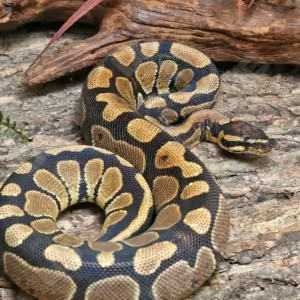

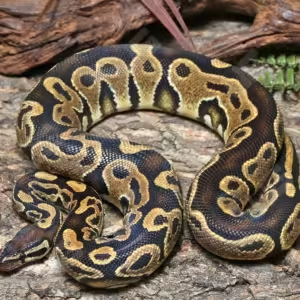




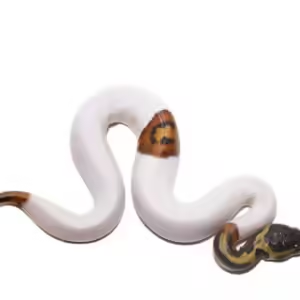




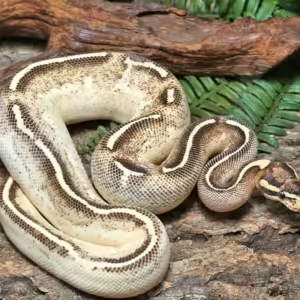
Reviews
There are no reviews yet.